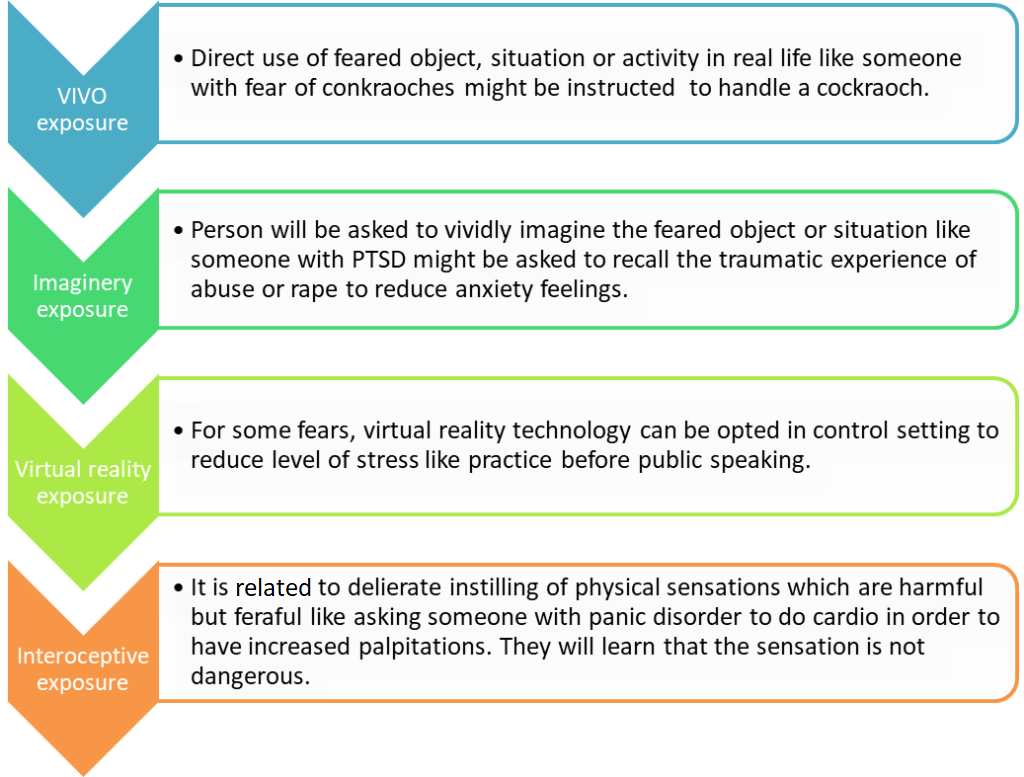A Quick Guide
Exposure therapy is a behavioral technique used to treat various problems, such as phobias, panic disorder, OCD, PTSD, social anxiety disorder, and generalized anxiety disorder. It involves gradually exposing individuals to feared objects or situations to reduce fear and anxiety. Benefits include habituation, extinction of learned associations, increased self-efficacy, and emotional processing. Drawbacks include potential relapse and differences between virtual and real-life exposure. The therapy’s pace and strategy depend on factors like severity, intensity, personality type, problem category, and available resources.
Sabrina was screaming her head off, banging on the door as hard as she can. She constantly struggled to escape from the room where she was locked with a white furry cat. Her brother claimed to be using a psychological technique of exposure therapy. But it was hard to tell whether this exposure therapy will desensitize Sabrina or traumatize the white furry cat!
This is what happens when we are freshmen and we run tests on our family, treating them as Guinee pigs or scapegoats.
What is exposure therapy?
It is a behavioral technique to break the cycle of fear. Avoiding the discomfort that the fear causes can lead to chronic anxiety if not treated timely.
What is it used for?
It is used to treat a range of problems including the following:
- Phobias
- Panic disorder
- OCD- Obsessive-compulsive disorder
- PTSD- Post-traumatic stress disorder
- Social anxiety disorder
- GAD- Generalized anxiety disorder
Watch: [How Exposure Therapy Works as a Treatment for PTSD]
Which strategies are used?
There are a variety of strategies used for this which are tailored according to the intensity of fear a person has and also the severity of issues it is causing in their daily life.

What are the three main ways to pace this therapy?
Exposure therapy is administered in various ways, from gradual to abrupt, and short to long-term, depending on the urgency as well as the severity of the problem.

What are the benefits of exposure therapy(ET)?
It is beneficial as it develops the following as a result:
- Habituation: with exposure, the fear becomes less intensified.
- Extinction: exposure helps to weaken the learned associations of feared objects as well as their bad outcomes.
- Self-efficacy: exposure empowers the person and makes them feel that they are capable of confronting their fear as well as managing their anxiety.
- Emotional processing: exposure also helps to learn new realistic, and positive beliefs about the feared object or situation.
What are the drawbacks of exposure therapy(ET)?
ET is promising, however, symptoms might return and there can be a relapse. Secondly, exposure to virtual and reality may differ. people might not be able to handle the real situation and can have the same anxiety-provoking scenarios.
The same stick cannot be used to treat everybody. Severity, intensity, personality type, problem category, and available resources of the client are the factors that will determine the pace and strategy use. making children face their fear of darkness by confiding them in a dark enclosed pace will bring more agony when apply in the name of exposure therapy.
References


